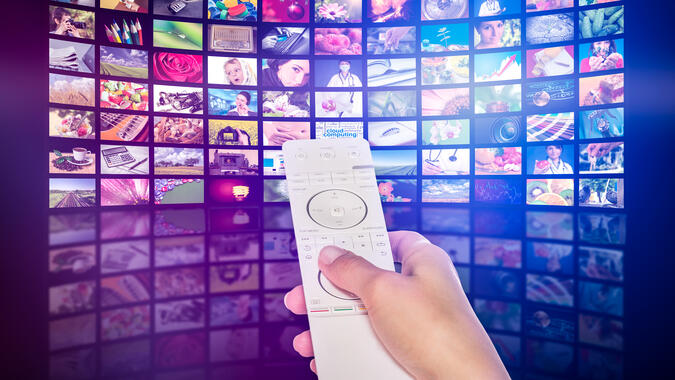
The Business of March Madness
- Published
- Apr 4, 2019
- Share
March Madness is the topic in today’s episode. We talk about the tremendous growth of this NCAA tournament, the evolution of streaming and online viewership, the impact of wagering and much more.
Transcript
Dave Plaskow: Hello and welcome to The Full Count. I'm your host, Dave Plaskow. Today, we will examine the everyday business and finance issues faced in sports, entertainment and the media. Today we're discussing the business of March Madness, its impact on workplace productivity, its media contracts and, of course, sports gambling. Thanks for being here.
EisnerAmper: Hi Dave. Absolutely. It's a great month to talk sports.
DP: Yeah, March Madness, cutting down the nets, Dick Vitale, all of that. First, give our listeners a bit of background on the growth of this tournament and the use of streaming services to watch the game.
EisnerAmper: March Madness is a real exciting time. Who doesn't love to fill out a bracket in March? It really gives everyone an opportunity to not only support their alma mater, but cheer for the underdog because who doesn't love a Cinderella story? The tournament has a huge viewership across the U.S., including social media and streaming. Just take 2018 for example - it generated more than 97 million viewers in the U.S. This number is expected to increase in 2019. Online viewership in 2018 garnered 69 million social media impressions and had a 28% increase in live streaming games and a 14% increase in hours watched on March Madness Live.
DP: What's March Madness Live?
EisnerAmper: March Madness Live is the NCAA’s digital platform to watch games online or via its app. The app is run and the online desktop is run by Turner Interactive. All those numbers previously mentioned are an indicator that March Madness has a huge boost on sports business, but it also has a unique opportunity to continue the sports streaming trend.
DP: Okay. Interesting. Sticking with streaming for a minute, now that it's possible to check the score on your phone, your desktop or another device, how's this impacting the workplace?
EisnerAmper: There's no doubt that the tournament has also had an effect on workplace productivity. In fact, estimates on lost productivity for U.S. employers are anywhere from $2 billion to $13 billion. This can be time spent on filling out brackets, to debriefing with other alumni in the office to actually watching the games themselves. It's most certainly a distraction. The need to watch those games played on Thursday and Friday, the first two weeks of the tournament are what led to the creation of what's known as the Boss Button back in 2006. This Boss Button allows streamers to watch live TV broadcasts and then with a click of a button, it switches to what appears to be a very important PowerPoint presentation.
DP:So wait a minute, you could be at your desk watching the games and then switch to some sort of official looking fake document in case the boss walks by.
EisnerAmper:That's right.
DP: That is diabolical.
EisnerAmper:This strategy, or what some might consider dedication to the game, has evolved as well. Starting out as an inception, it was an Excel document and then it moved to a flow chart and an email inbox before moving to its latest PowerPoint presentation, which is what they're using this year. And the actual presentation is titled “How to Disguise a March Madness Watch Party.” I mean, it's clearly a clever tactic to put the viewer's mind at ease that they might not be caught watching basketball at work. Interestingly enough, in 2009, the NCAA began taking on sponsors for this button. Comcast being the first followed by CVS, Buick and Sony.
DP: All I can say is, wow, that's American ingenuity at its finest. Let’s now turn to how the media and broadcasting rights factor in?
EisnerAmper: Well, CBS and Turner Sports share the rights to the entire tournament, so every tournament game can be viewed on one of their television stations all tournament long. It definitely provides a significant TV audience. However, the cost of March Madness is significant to both CBS and Turner as they will have paid $19.6 billion for the TV and streaming rights to the tournament through 2032. The success of live streaming has also created a significant amount of tournament ad revenue to the tune of $1.3 billion in 2018 alone.
DP:Now there's been some talk that changes to the NBA draft could impact the value of these contracts, correct?
EisnerAmper: Yeah, absolutely. Nothing will probably be done until after the new NBA CBA agreement expires after the 2023/24 season. If the NBA were to remove this one-and-done rule that they currently have, this could lead to the top players sidestepping the NCAA and go directly to the NBA or it's G League. Think of this year, for instance, you wouldn't have the Zion Williamsons of the world. This could really provide a boost to the NBA and the G League as they get these players quickly, but it can also decrease the viewership and thus impact the value of these CBS and Turner media contracts. This leads to the question of if that were to happen, what would CBS and Turner have to focus on in order to maintain this value? I could see sports betting be integrated into maybe these live streaming of the games.
DP: Okay. So certainly a shared topic in the world of sports business, how does sports gambling impact the tournament?
EisnerAmper: So there's no doubt that the NCAA has tried to distance itself from sports betting, but interest from sports gamblers is really the primary reason for this tournament's popularity, which has translated into the significant NCAA revenue in the form of these lucrative media contracts. I believe even if the top players leave early for the NBA in the future, having integrated sports betting would really keep these viewers engaged. Although fans appreciate the skill set of these players, the attraction of the tournament is through filling out the brackets and sports gambling, and it provides fans with a vested interest to a ton of games over a short period of time. It's amazing. This tournament is the largest sporting event for in-person and online gambling since this year’s Super Bowl. With the 2019 tournament alone expected to have total wagers of more than $8.5 billion according to the American Gaming Association.
DP:That’s a nice piece of change. So tell us how wagering and streaming go hand in hand.
EisnerAmper:There’s no question that individuals enjoy filling out a bracket every March and wagering on point spreads, but the real success of live streaming can lead to in-game betting, which can enhance the live streaming experience. Since CBS and Turner own the TV and live streaming rights, it's possible that they can incorporate in-game sports betting, in the states where it's legal, into the live stream broadcast to make it more interactive for its viewers. For example, Bleacher Report, which is owned by Turner, has an arrangement with Caesar's to open a Bleacher Report studio in the sports book at Caesar's Palace to provide sports betting programming and gaming-related editorial content. This relationship could be essential in creating the in-game sports betting.
DP:Well for me, my alma mater, Fairleigh Dickinson, got knocked out in the first round by Gonzaga, so there's always next year. Thanks for this valuable information. And thank you for listening to The Full Count as part of the EisnerAmper podcast series. Visit eisneramper.com for more information on this and a host of other topics, and join us for our next EisnerAmper podcast where we get down to business.
Also Available On
Contact EisnerAmper
If you have any questions, we'd like to hear from you.
Receive the latest business insights, analysis, and perspectives from EisnerAmper professionals.










